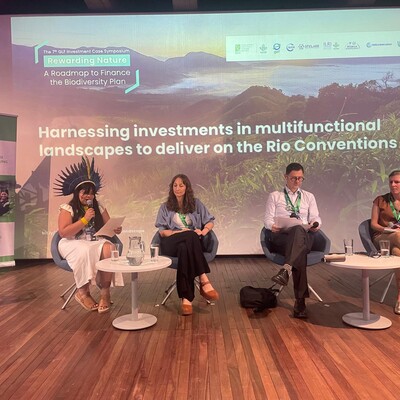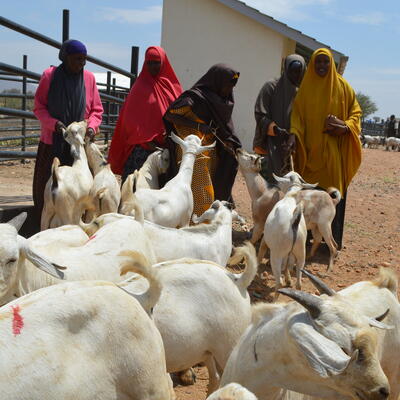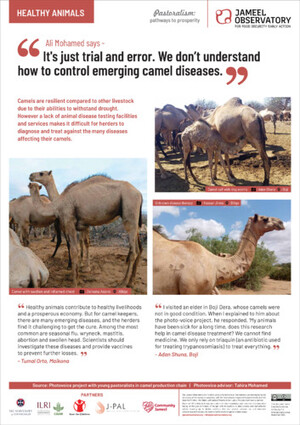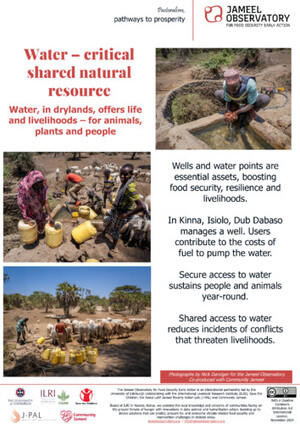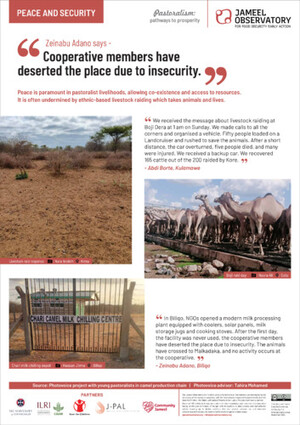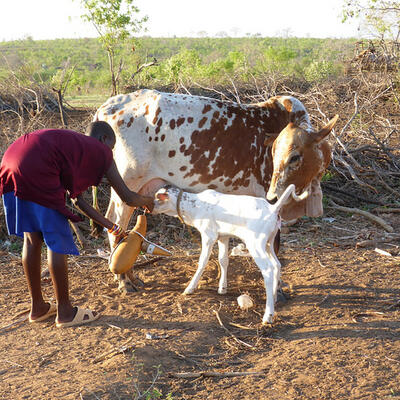
Technical Consortium for Building Resilience to Drought in the Horn of Africa
The Technical Consortium for Building Resilience in the Horn of Africa is a project of the CGIAR, which was formed in 2011 to provide support to the Intergovernmental Authority on Development (IGAD) and its Member States (Djibouti, Ethiopia, Kenya, Somalia, South Sudan, Sudan and Uganda) to formulate regional and national investment programs for the long-term development of ASALS. These investment plans became the Country Program Papers (CPPs) for drylands projects for the Member States and the Regional Programming Framework (RPF), which focused on investment plans to address regional issues for IGAD.
Since the development of these investment plans, the consortium has embarked on more focused engagement with the Member States, beginning initially with Kenya and its focal point for drylands investment planning, the National Drought Management Authority (NDMA), but with a view to extending this engagement to the other Member States over the next few years. At present, the consortium is extending its support to Ethiopia and is reviewing the best protocol for engagement in this Member State with respect to the focal point for drylands investment.
Within Kenya, the consortium chairs the Technical Sub-Committee for the Knowledge Management Cluster, one of six clusters formed to provide technical and institutional support to the implementation of the CPPs (in Kenya now called the Ending Drought Emergencies - Medium Term Plan (EDE-MTP)). It is engaged in providing better tools for investment targeting and decision analysis. Some of these include developing a Monitoring and Evaluation System, the creation of various spatial and decision analysis models in a decision-making framework.
Within the next year, the consortium hopes to provide each member state with a data catalogue containing links and meta-data to baseline indicators to reflect progress of investment towards standard human development indicators (health, socio-economic, living standards, education). This baseline indicator catalogue provides the foundation for a robust M&E system which will eventually contain a project-based Management Information System.
In addition to indicators for progress within the duration of the project, the consortium is working with Kenya's NDMA to develop "resilience or impact pathways" which include progress indicators to measure the impact of investment on development outcomes at longer temporal scales than is possible at the project level, and outcome mapping to indicate behavioural and transformational change. It is working with each Cluster to build capacity to identify these indicators and for the technical personnel within NDMA to be well-versed in Outcome Mapping.
Working with partners within the CGIAR system and without, the TC aims to bridge the gap between theoretical and applied science for impact for development. Some of these collaborations include partnerships with Colorado State University, the College of William and Mary, the University of Texas at Austin, HabitatINFO, the Norwegian Refugee Council (NRC), the Internal Displacement Monitoring Centre (IDMC) and Climate Interactive (CI), with whom we are developing spatial modeling techniques to better target investments. This spatial modeling aims to allow member state governments to understand patterns of rangeland condition in pastoral areas, feed availability for livestock and derivations of displacement of pastoralists in times of crisis.
In addition, the consortium is working with ICRAF, developing a decision analysis framework and decision support modeling techniques, looking at the trialing of investment options prior to implementation and the isolation of high value data variables to understand the impacts of investments with respect to enhanced resilience.
Derivatives from the spatial modeling of rangelands will also contribute to reflecting the following: the relative resilience of different geographical areas of the region, both at country and regional resolution, using composite indicators from the ecological, social and economic systems to model susceptibility to shocks and time to recover and the spatial distribution of resources - investments by type, sector, donor, geographical area and agency for better targeting.





